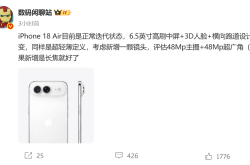Embodied AI's Maiden Year: Intense Competition Among Startups
![]() 01/07 2025
01/07 2025
![]() 590
590
In the first half of 2024, AI financing predominantly focused on large models, with star startups gaining widespread popularity. However, in the latter half of the year, capital began to shift gears, recognizing the commercial potential in large model entrepreneurship, particularly in applications such as smart hardware and embodied AI, which hold grander visions.
This shift has led to a stratification among startups, with increasingly distinct ecological niches emerging. This differentiation largely hinges on each company's introspection regarding their entrepreneurial paths.
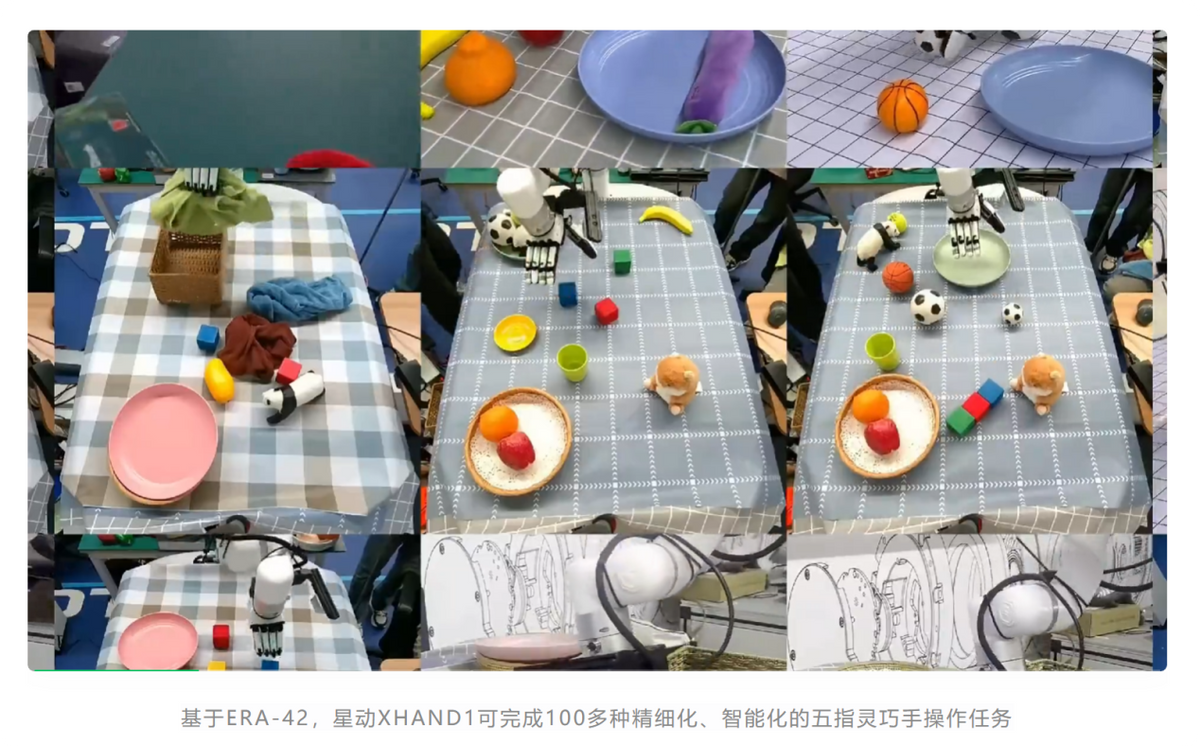
A recent case in point is the end-to-end native robot large model ERA-42, or the "Star Age Native Robot Large Model," launched by Star Age at the close of 2024. According to Star Age, this marks the industry's first achievement of dexterous five-fingered movement and multi-task operability through a single embodied large model. ERA-42 is also the world's first true embodied large model equipped with dexterous five-fingered hands.
On Par with Tesla's Path
When discussing end-to-end algorithms, Tesla's autonomous driving solution often comes to mind first. This is a widely recognized path characterized by high R&D difficulty and a long development cycle, requiring vast amounts of real-world data to continuously refine neural network models and optimize algorithm logic, resulting in highly functional and stable systems.
Indeed, whether viewed from the perspective of application logic or Musk's continued promotion of AI, one can argue that autonomous vehicles following the FSD path are a type of intelligent robot tailored for specific scenarios. Tesla's highly favored and fully invested humanoid robot direction also leverages the same full self-driving system as its cars. The core "human-like thinking" behind both stems from the same foundational technological logic. In a sense, Star Age, with its focus on cutting-edge applications of general AI, shares similarities with Tesla in its end-to-end algorithm approach.
However, based on the current industrial context and its investment capabilities, Star Age bypasses the heavy asset of robot shells and prioritizes general embodied agents. In contrast, Tesla pursues the industrialization of humanoid robots.
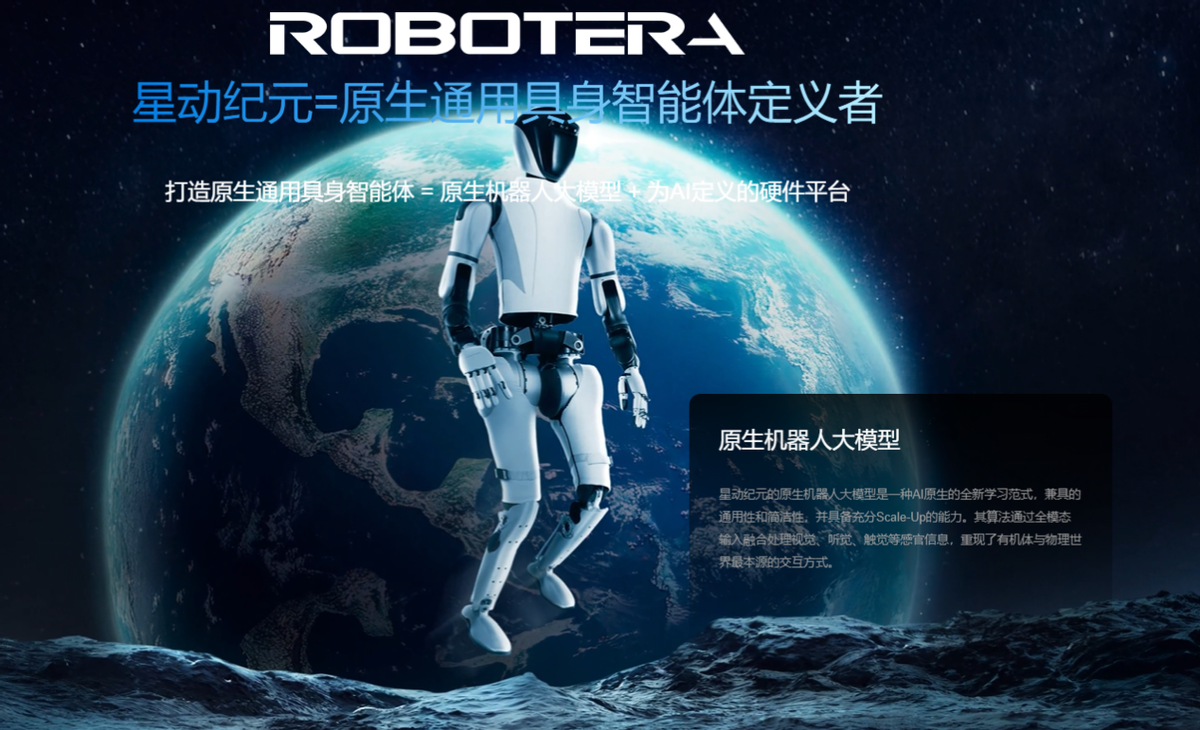
Star Age was established with funding from Tsinghua University's technology transfer platform, Huakong Tech Transfer Co., Ltd., and is incubated by Tsinghua University's Institute for Interdisciplinary Information Sciences and Shanghai Qi Zhi Institute. Its research capabilities should not be underestimated. Star Age's first-generation humanoid robot product likely originated around 2022, developed by founder Chen Jianyu during a research project.
According to public information, Chen Jianyu is an assistant professor and doctoral supervisor at Tsinghua University's Institute for Interdisciplinary Information Sciences. After graduating from Tsinghua University, he pursued his Ph.D. at the University of California, Berkeley, under the guidance of Professor Masayoshi Tomizuka, an academician of the US National Academy of Engineering and the founder of MPC algorithm theory.
In just two years, Star Age has iterated its humanoid robot products to the sixth generation, with the latest generation, Star Age STAR 1, released in August this year.
This time, Star Age has successfully introduced the world's first true embodied large model with dexterous five-fingered hands, ERA-42, refreshing external perspectives on embodied intelligence working methods.
The Significance of Dexterous Five-Fingered Hands
From the presentation at the launch event, ERA-42, combined with the self-developed dexterous five-fingered hand "StarAge XHAND1," has learned to utilize various tools to complete over 100 complex and dexterous tasks, including drilling screws with a screwdriver, hammering nails with a hammer, righting an overturned cup, and pouring water into it, among others.
Xi Yue, co-founder of Star Age, stated that the Star Age large model learns from massive video data, with its core strategy not being a simple imitation of the actions in the videos but rather delving into the consequences of those actions.
In summary, the end-to-end native robot large model ERA-42 demonstrates not human-like actions but human-like thinking—thinking that drives action, which is the crucial difference.
These operations do not require any manual design features, pre-programming, or other steps. Through a concise neural network link, the model can quickly learn and perform new tasks by collecting a small amount of data in less than two hours.
With the integration of a world model, unlike other robot large models that learn actions directly or only use the world model to generate simulation data, embodied agents equipped with the ERA-42 model also possess an understanding of the physical world, enabling them to predict future action trajectories and quickly respond to external disturbances, thereby further enhancing their generalization and adaptability.
Moreover, scalability is the key to unlocking general embodied agents for a "true" embodied large model. Startups must maximize the use of every resource, but building general operation models requires massive data consumption and a high demand for high-quality data, which have been significant obstacles for entrepreneurial teams.
Star Age's ERA-42 solution is not limited by data quality and can effectively reduce data collection costs. Combined with its newly developed AI hardware platform, Star Age's embodied agents are evolving through software and hardware co-evolution, thereby accelerating commercialization.
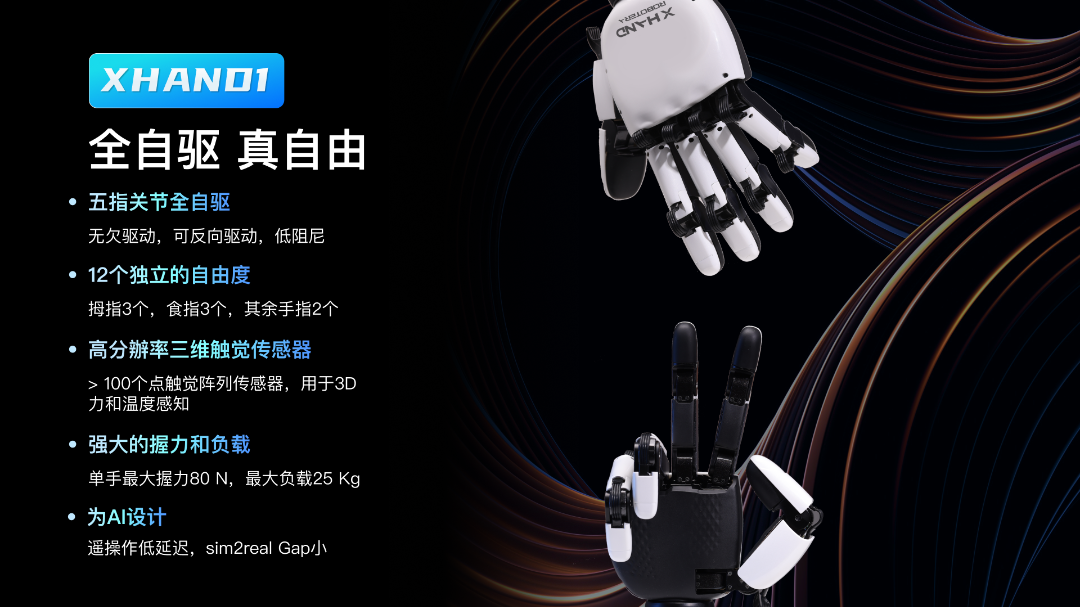
Regarding this, Xi Yue also stated, "Relying on ERA-42, the versatility and generalization of tasks executed by Star Age's general humanoid robots will be significantly enhanced. Combined with the previously released motion performance of stable walking and running on complex and diverse terrains, coupled with the coordinated upper and lower limb operation capabilities, potential application scenarios will also become more diversified, truly realizing the industrialization of native general embodied agents."
He believes that the path of native robot model training explored by Star Age is ushering in the era of general dexterous manipulation for embodied large models and even providing new ideas for global research teams in general embodied intelligence.
Now it's dexterous five-fingered hands, and in the future, it could be general embodied intelligent manipulation of feet, and even further, the iteration of a full-body general agent.
Embodied AI Enters the Spotlight
Star Age's strength is also indirectly reflected in its ability to attract funding. With impressive R&D capabilities and a series of achievements, it has secured three rounds of financing in its first year, raising a cumulative total of approximately 400 million yuan, successfully attracting investors such as Turing Venture Capital, Legend Capital, Vision Plus Capital, and Alibaba.
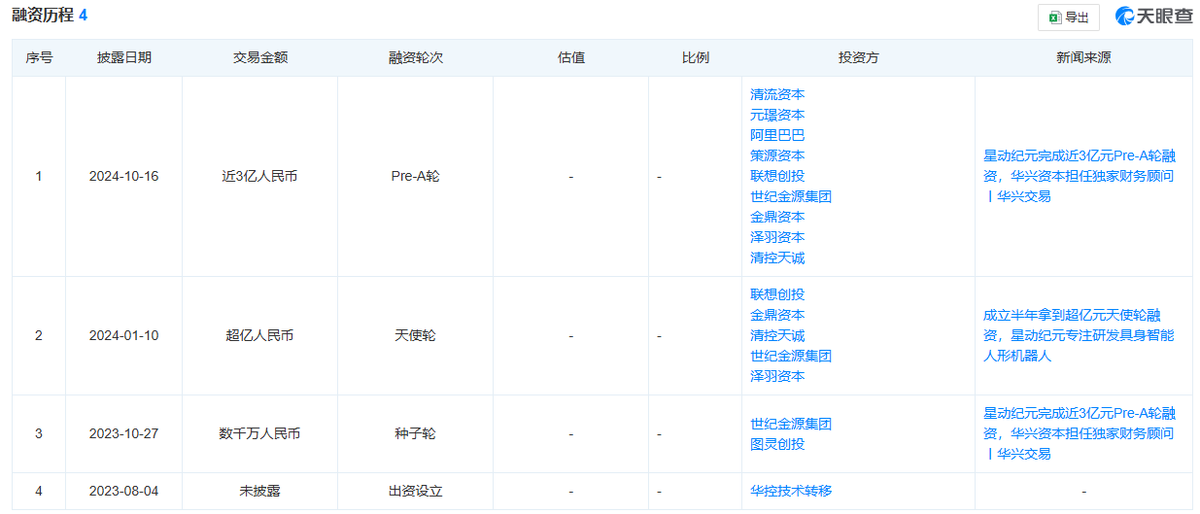
This year also marks the beginning of embodied AI's spotlight moment. According to incomplete statistics from the GIIA, in the first ten months of this year alone, there were 56 financing events in the domestic humanoid robot industry, involving over 5 billion yuan; globally, there were 69 financing events in the same period, with disclosed amounts exceeding 11 billion yuan.
The popularity of generative AI has accelerated the development of embodied AI: on the one hand, it provides development tools; on the other hand, it reminds the outside world that AI + robots have the potential to break through the barriers between robots and the physical world.
In the industry, Galaxy General, which was also founded just over a year ago and prioritizes the implementation of "hands," secured the "largest angel round of the year" in June and completed another strategic financing round of 500 million yuan in November, bringing its total financing to over 1.2 billion yuan.
Founded by Wang He, a Stanford Ph.D., a doctoral supervisor at Peking University, and the head of the Embodied Large Model Research Group at the Beijing Academy of Artificial Intelligence, Galaxy General released its first-generation generalized embodied large model robot, Galaxy General G1, in June 2024, with mass production expected as early as 2026 and small-batch orders anticipated to be delivered in 2025.
Zhiyuan Robotics, founded by Peng Zhihui, a former "genius youth" at Huawei, has released five commercial humanoid robots (Expedition A2, Expedition A2-W, Expedition A2-Max, Lingxi X1, and Lingxi X1-W), forming a complete product matrix. Recently, Zhiyuan Robotics officially announced the commercial mass production of general robots, expecting to roll out over 900 robots by the end of the year, with nearly 700 scheduled for shipment.
Zhiyuan has also established the industry's largest embodied data collection factory, with hundreds of robots operating simultaneously, producing tens of thousands of robot and simulation environment data daily. The factory also includes simulated scenarios of multiple human living spaces such as bedrooms, living rooms, and bathrooms, preparing for future entry into household scenarios.
Pudu Robotics, founded in 2016 and funded by well-known investors such as Meituan, Tencent, and Sequoia Capital, is currently the most commercially successful all-rounder. According to Frost & Sullivan data, Pudu Robotics led the global commercial service robot market with a 23% share in 2023 and nearly half of the Chinese manufacturers' overseas shipments, becoming the only vendor to successfully navigate the initial market validation for general embodied robots.
Its product matrix continues to evolve. Recently, Pudu just released the full-size bipedal humanoid robot PUDU D9. Combined with its previously released first-generation humanoid-like robot PUDU D7 and the 11-DOF dexterous five-fingered hand PUDU DH11, Pudu has become the first company in the industry to achieve a comprehensive layout of three forms, and this multi-category product matrix gives it greater potential to achieve full-stack embodied intelligence in the future.
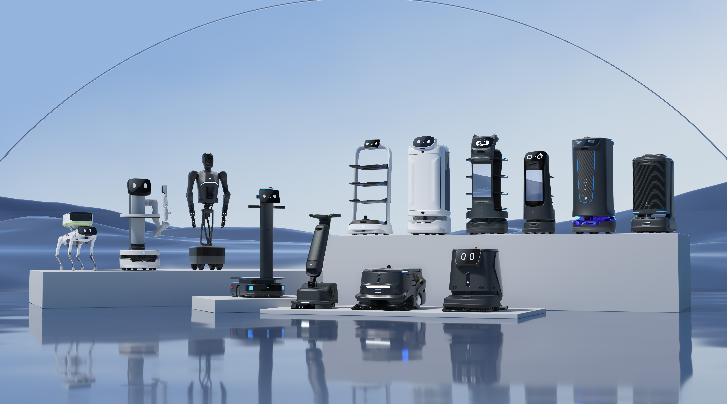
Other companies, such as Unitree Robotics, a leader in quadruped robots, have frequently appeared in robotics research projects by NVIDIA, a global AI giant. Recently, their visually grounded language model "NaVILA," developed in collaboration with NVIDIA, has been tested on Unitree's Go2 and G1 robots.
Meanwhile, its product, the Unitree H1, began a pilot program at NIO's automobile factory in the first half of the year and received positive feedback. In terms of mass production, Unitree has established a complete industrial chain system, realizing independent production from raw materials to core components.
In summary, domestic general embodied AI enterprises each have their technical focus and seek to carve out clear business paths, accelerating their differentiation from other players. At the same time, the "academic school" has truly emerged as one of the most powerful drivers in this industry.
In addition to the aforementioned companies, the three co-founders of Xinghaitu, Gao Jiyang (also CEO), Xu Huazhe, and Zhao Xingjun, are all Tsinghua alumni. The latter two are assistant professors and doctoral supervisors at Tsinghua University's Institute for Interdisciplinary Information Sciences, with Xu Huazhe also serving as the head of Tsinghua University's Embodied Intelligence Laboratory.
The founder of Songyan Power, Jiang Zheyuan, was once a student of Star Age's founder Chen Jianyu and has completed angel and Pre-A funding rounds.
Qianxun Intelligence, which has raised nearly 200 million yuan in funding, also has ties to Tsinghua University. Its co-founder Gao Yang is an assistant professor at Tsinghua University's Institute for Interdisciplinary Information Sciences, director of the Vision and Embodied Intelligence Laboratory at Tsinghua University, and a doctoral supervisor.
This structure markedly differs from entrepreneurship in the past electrical and information eras. Perhaps it can be said that in the era of embodied AI entrepreneurship, China's tech-driven entrepreneurs, armed with forward R&D capabilities and a comprehensive technical system, have learned how to achieve "orderly entrepreneurship" and transform technological achievements into productive forces. As a result, China's embodied AI sector, which benefits from these advantages, is expected to emerge with more winners in this innovation cycle.
Source: Pinecone Finance

